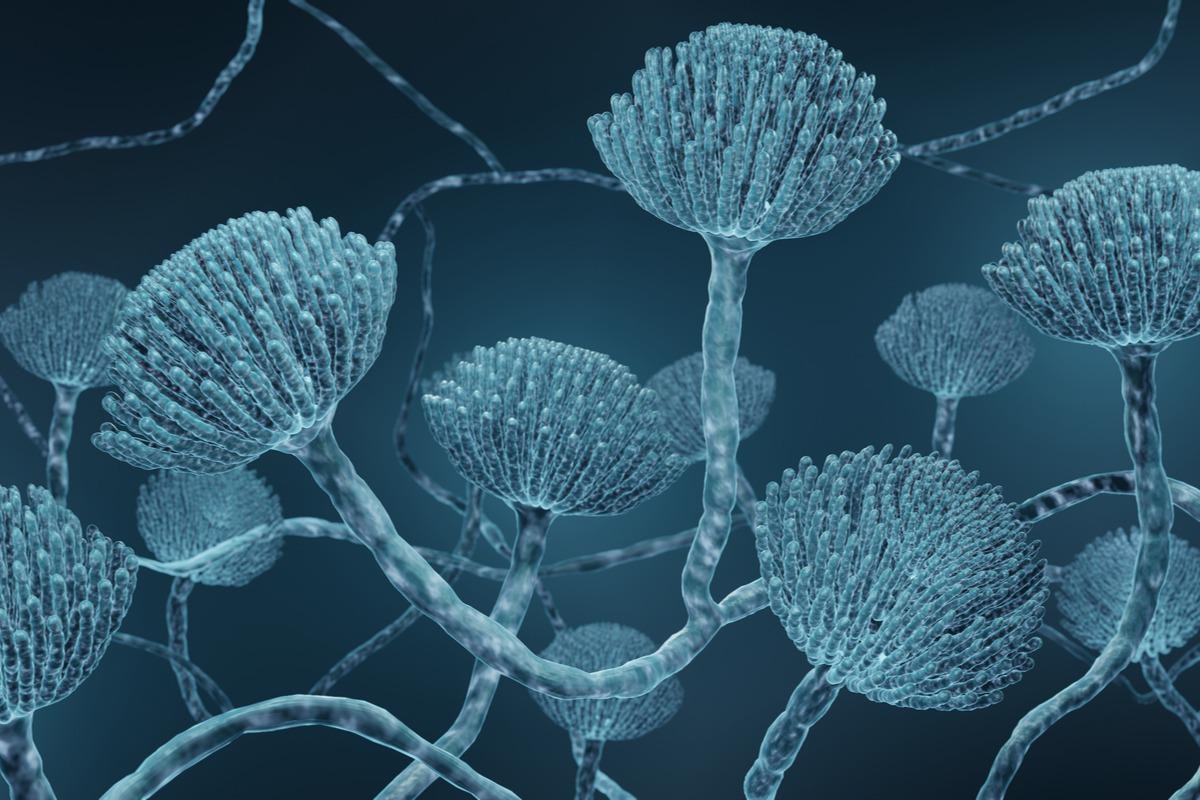Coronavirus disease 2019 (COVID-19) spread across the world in 2020, causing an ongoing global pandemic that has killed over 6.2 million people. For most of the duration of the pandemic, healthcare workers were frustrated by a lack of treatments for infection with severe acute respiratory syndrome coronavirus 2 (SARS-CoV-2), the causative agent, instead being forced to rely on invasive mechanical ventilation and supplemental oxygen.
 Study: New austalide derivative from the marine-derived Aspergillus sp. and evaluation of its biological activity. Image Credit: ART-ur/Shutterstock
Study: New austalide derivative from the marine-derived Aspergillus sp. and evaluation of its biological activity. Image Credit: ART-ur/Shutterstock

 *Important notice: Research Square publishes preliminary scientific reports that are not peer-reviewed and, therefore, should not be regarded as conclusive, guide clinical practice/health-related behavior, or treated as established information.
*Important notice: Research Square publishes preliminary scientific reports that are not peer-reviewed and, therefore, should not be regarded as conclusive, guide clinical practice/health-related behavior, or treated as established information.
Recently, researchers from Ain Shams University have been exploring the use of compounds isolated from Aspergillus sp. against SARS-CoV-2.
The study
The investigation began with an in-depth chemical investigation of the ethyl acetate extract of the fungus isolated from coral collected from the coast of egypt. This identified one new meroterpenoid austalide X (compound 1), one known austalide W (compound 2), six known prenylated indole diketopiperazine alkaloids (compounds 3 to 8) and phthalic acid and its ethyl derivative (compounds 9 to 10). The new meroterpenoid austalide X was isolated as a pale-yellow amorphous powder, and liquid chromatography mass spectrometry (LCMS) revealed peaks at m/z 505 and 503, which represented [M+H]+ and [M-H]- respectively, corresponding to a molecular formula of C26H32O10. UV spectrum of the same compound showed a gamma max at 270nm, standard for austalides, and 1D and 2D nuclear magnetic resonance (NMR) spectroscopy revealed the chemical structure. Compound 1 and 2 showed very similar properties, both containing 26 carbons in the same chemical groups. In fact, closer inspection of the NMR data revealed that compound 1 only varied from compound 2 by the presence of a new hydroxyl group at C-18.
Further analysis of the ethyl acetate extract of the Aspergillus sp. was analysed using LC-MS, examining the difference between Aspergillus grown in conventional solid rice medium to solid beans culture medium. The major effect seen was the complete disappearance of several major compounds produced in the rice medium at retention times 32.8 minutes nad 35.7 minutes. These two compounds had molecular weights of 511 and 479, which corresponded to the diketopiperazine derivatives compounds 3 and 4. As well as this, the new meroterpenoid, compound 1, was found in both extracts, showing that both medias could support its production. As well as this, it was discovered that at retention time 22.7 minutes, compound 8 was no longer present in the bean’s medium.
Before evaluating the ability of these compounds to potentially inhibit COVID-19, the researchers first evaluated the cytotoxic effects of compounds 1-4, 6 and 8. All showed moderate to weak effects, with IC50 values between 32.5 and 126ug/mL. Compound 1 had an IC50 of 51.6ug/mL. In silico molecular docking performed on three proteins heavily involved in the SARS-CoV-2 viral invasion helped elucidate any inhibitory effects of the compounds. Examining the main protease, the spike glycoprotein and angiotensin-converting enzyme 2 (ACE2), the results revealed that both compounds 9 and 10 highly inhibited all the proteins. Compound 10 showed binding energy of -25.2kcal/moles with the main protease, as it formed four conventional H-binds in addition to two π-alkyl bonds. It inhibited the spike glycoprotein as well, with a binding energy of -12.17 kcal/mole, due to the formation of three H-bonds and an additional C-H bond. Compound 10 also showed a binding activity of -15.89kcal/mole for ACE2.
Finally, the researchers predicted the pharmacokinetic, pharmacodynamic and toxicity properties of the compounds. Compounds 1, 2, 4, 7, 8, 9 and 10 all showed good human intestinal absorption, lying within the 99% absorption ellipse. Compound 10 also showed optimal stability, while the rest of the compounds were classified as ‘good’ or ‘possible. Compounds 4, 9 and 10 all had medium to low BBB penetration levels, while the BBB penetration of the rest of the compounds could not be defined. As for plasma binding, compounds 1, 2 and 9 were the only compounds that displayed less than 90% plasma protein binding. In silico testing predicted no mutagenic effects, but compounds 9 and 10 were carcinogenic in female rats, and compounds 1, 2, 6 and 8 were carcinogenic in male rats. Most compounds showed no skin irritation, and mild to moderate eye irritation.
Conclusion
This study has shown that Aspergillus sp. could potentially act as a promising source of drug leads that could combat COVID-19 infection, as several of the isolated compounds have reasonable levels of toxicity and are pharmacologically active. However, more in-depth studies would be required before any of these compounds could be taken to clinical trial.

 *Important notice: Research Square publishes preliminary scientific reports that are not peer-reviewed and, therefore, should not be regarded as conclusive, guide clinical practice/health-related behavior, or treated as established information.
*Important notice: Research Square publishes preliminary scientific reports that are not peer-reviewed and, therefore, should not be regarded as conclusive, guide clinical practice/health-related behavior, or treated as established information.